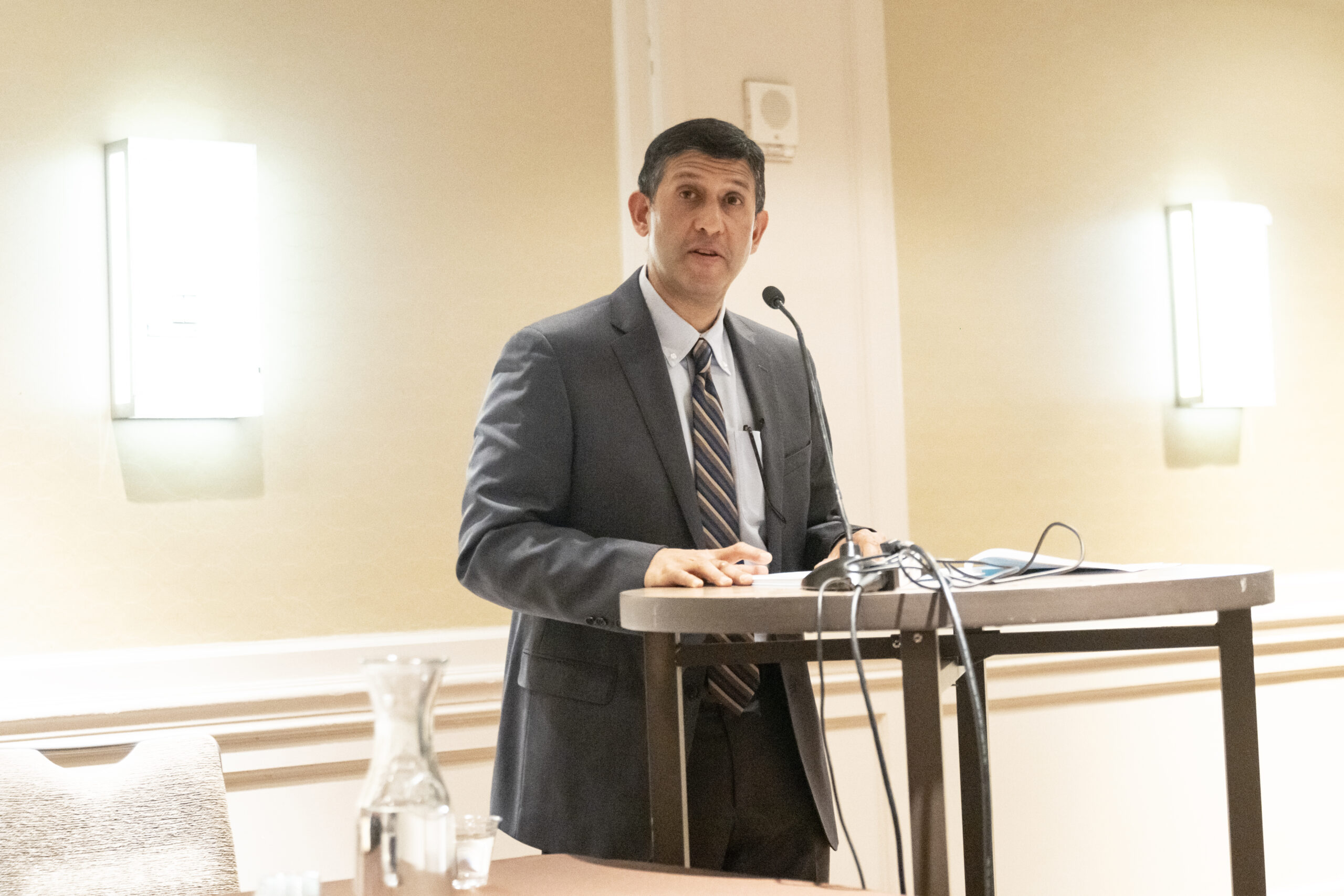Editor’s Note: Following the publication of Russell Olwell’s essay, “History Departments and the NCATE/NCSS Accreditation Process: Time for a Change,” in the May 2006 issue of Perspectives, we received several communications commenting on the article. We are publishing them as a forum on the subject along with the first essay, which was specially written by Margaret Crocco in response to our request to the National Council for the Social Studies seeking comment on the Olwell article, along with essays by Charles Howlett and Larry Frohman.
Upon reading “History Departments and the NCATE/NCSS Accreditation Process: Time for a Change,” my first reaction to Russell Olwell’s essay was “Russ, I feel your pain.” In fact, many departments and schools of education, as well as history departments, have found the NCATE accreditation process unduly burdensome and questionably productive in raising standards for the preparation of teachers. The involvement of the Specialty Professional Associations (SPAs)—in the case of history, the National Council for the Social Studies (NCSS)—surely adds another set of challenges to this process. Over the last year, the American Association of Colleges of Teacher Education has been engaged in discussions with the SPAs about how best to remedy these problems. In short, NCSS recognizes that its processes need refinement. Nevertheless, I will argue here for keeping NCSS involved with accreditation of history teachers for several reasons. I believe that the NCSS standards are an effective way of ensuring that history remains an essential element of the preparation of teachers in all 50 states.
Let me begin with full disclosure on several counts. I am a member of both the American Historical Association and NCSS. I work in New York and reside in New Jersey, two states with markedly different approaches to social studies education. More significantly, the Program in Social Studies at Teachers College did not merit “national recognition” in its recent NCATE accreditation. As a one-year master’s degree with New York State certification, our program seems out of sync with the NCSS accreditation process. Despite this, I believe that the proper cure for a problem depends on correct diagnosis. In my judgment, the problem is not NCSS itself or its standards so much as the organization’s implementation of the program review process.
Participants in discussions of such matters on all sides need to refrain from oversimplification and caricaturing of competing positions. History advocates and social studies educators have many interests in common, especially a shared desire to see history in particular and social studies in general taught well in the nation’s schools. With the narrowing of the curriculum due to “No Child Left Behind” and high-stakes testing, we all need to work together to ensure young people have adequate opportunity to study the history of this nation and the rest of the world.
What Olwell sees as “vague” in the NCSS curriculum standards, I see as conceptual, thematic, and flexible—very much in keeping with the approach to history education endorsed by the National Research Council’s How Students Learn: History in the Classroom and the Benchmarks for Professional Development in Teaching History as a Discipline.1 In this brief rejoinder to Olwell’s essay, I argue that these attributes of the NCSS standards, their broad suitability to the national context of social studies education, and the longstanding commitment of NCSS to K–12 education, all argue for keeping it as the professional organization involved with oversight of teacher preparation for history and social studies teachers nationwide.
In making this defense of NCSS, I will not address several issues that are related but not central to Olwell’s argument. One of these has to do with whether “social studies” represents a fusion or federation of disciplines. Whatever position one takes on this subject, history has always been at the core of social studies. Another ancillary issue has to do with the optimal certification requirements for history teachers. In New York State, where high school students must take four years of social studies to graduate, future teachers must take 21 of 30 social science credits in history. What courses future teachers should take in history, however, is a problem worthy of further consideration. It seems that too many history majors take coursework with relatively little connection to the high school curriculum. I suspect that Olwell and I agree on the importance of strong content preparation for future teachers of history, although we might disagree on what this should look like—another topic worthy of further discussion but beyond the scope of this essay.
That said, I will make three points about the suitability of NCSS and its standards to the NCATE accreditation process. First, all 10 NCSS themes can be related to the study of history. My experiences as a teacher educator indicate that most social studies teachers manage to do this regularly and effectively. Readers of Perspectives know well that history has become a broader, more interdisciplinary discipline than it was decades ago. Historical research now embraces social, cultural, intellectual, and transnational approaches alongside traditional emphases on political and economic history.
Likewise, the 10 NCSS curriculum standards reflect the diverse ways in which history and the social sciences inform one another. Nothing in these standards vitiates in-depth study of history over the course of K–12 curriculum. In fact, quite the contrary is true: Strong support for history can be found in both the NCSS Curriculum Standards and the Program Standards for the Initial Preparation of Social Studies Teachers.2 The shared commitment of AHA, OAH, and NCSS to history resulted in their collaborative effort in designing the Benchmarks, an extremely useful contribution to teacher preparation programs.
State variability in curricula and teacher licensing requirements is a second reason to keep NCSS and its standards in place. The U.S. system of governance places control over education into the hands of 50 states and approximately 15,000 school districts. Of these, 49 states allow a significant degree of decision making about curriculum and instruction to local education agencies and even to schools, teachers, and parents.3 Although New York State has a curriculum mandated by the New York State Regents, one that is heavily tilted towards history and enforced through a system of high-stakes accountability measures, this is not the case in every state. By contrast, in New Jersey high school students must take only three years of social studies. Local districts are given significant discretion in determining their approach to social studies curriculum. The high school curriculum often consists of electives organized around themes and issues which draw on history but are not necessarily presented in the survey-course format found throughout New York. In both states, however, curriculum frameworks provide for significant coverage of history, and to a lesser extent, geography, economics, and civics—either through disciplinary or interdisciplinary courses. In other regions of the country, the differences in approach to social studies curriculum are even more pronounced.
Likewise, some states certify teachers in history; others in broad-field social studies. This is related, at least in part, to the realities of the marketplace for teachers in different regions of the country (not to mention, unfortunately, the need to hire football coaches). Principals benefit from the ability to move teachers from U.S. history one year to civics the next. Broad-field social studies (like broad-field science) certification contributes to the exchange of teachers in high schools just as K–8 certification does in elementary schools. Maintaining NCSS as the accrediting agency for social studies teachers provides flexibility for personnel placement in American high schools, an argument which may not be terribly compelling to readers of this journal. But it also ensures that no state ignores history, even those with more interdisciplinary than disciplinary approaches to teaching social studies.
A third reason to keep NCSS involved in the accreditation process has been its close connection to K–12 education since its founding in 1921. Social studies scholars have contributed significantly to expanding the research base on teaching and learning history over the last twenty years. This subject holds a prominent place in the field’s publications, annual conferences, teacher preparation, and professional development efforts.
Over the last 50 years, it is fair to say that AHA’s interest in schools has waxed and waned. Although the AHA has made laudable efforts recently to do greater outreach to K–12 teachers, its publications and annual conferences demonstrate its primary focus to be research and college teaching. Clearly, some historians working in colleges once associated with normal schools may be quite involved in teacher preparation. Some have joined forces with the National Council for History Education (NCHE) and Teaching American History grants to improve both preservice and in-service teachers’ knowledge of history. Even so, none of these organizations has been as consistently involved with teachers and teacher preparation as NCSS over the last several decades.
The cure for our problem does not lie in dumping the NCSS standards or in replacing NCSS with the AHA. Instead, I hope that both organizations will work together to sustain and strengthen the teaching of history nationwide. In the meantime, I hope NCSS will improve management of its contribution to the accreditation process. There needs to be greater flexibility in recognizing the good efforts made by diversely-situated history educators while also insuring fidelity to high standards. Such flexibility would be in keeping with the performance orientation to accreditation promulgated by NCATE in 2000. This approach “defines the outcome to be achieved rather than specifying the method of achieving the desired result.”4 Given the shift that NCATE is making in its SPA program reporting process, now would seem a good time to reevaluate, reflect and make the changes needed to build greater flexibility into this process.
Notes
- National Research Council, How Students Learn: History in the Classroom (Washington, DC: National Academies Press, 2004). [↩]
- These documents may be found at www.ncss.org. [↩]
- National Center for Education Statistics, “Digest of Education Statistics, 2003,” NCES 2005-025 (Washington, 2005). [↩]
- Sharon P. Robinson, “The Evolution and Reality of Standards,” American Association of Colleges of Teacher Education Briefs 27:9 (June 5, 2006), 2. See also, Kevin M. Casey, “Greater Expectations: Teaching and Assessing for Academic Skills and Knowledge in the General Education History Classroom,” The History Teacher 37:2. [↩]
Margaret Smith Crocco is professor and coordinator of the Program in Social Studies at Teachers College, Columbia University.


